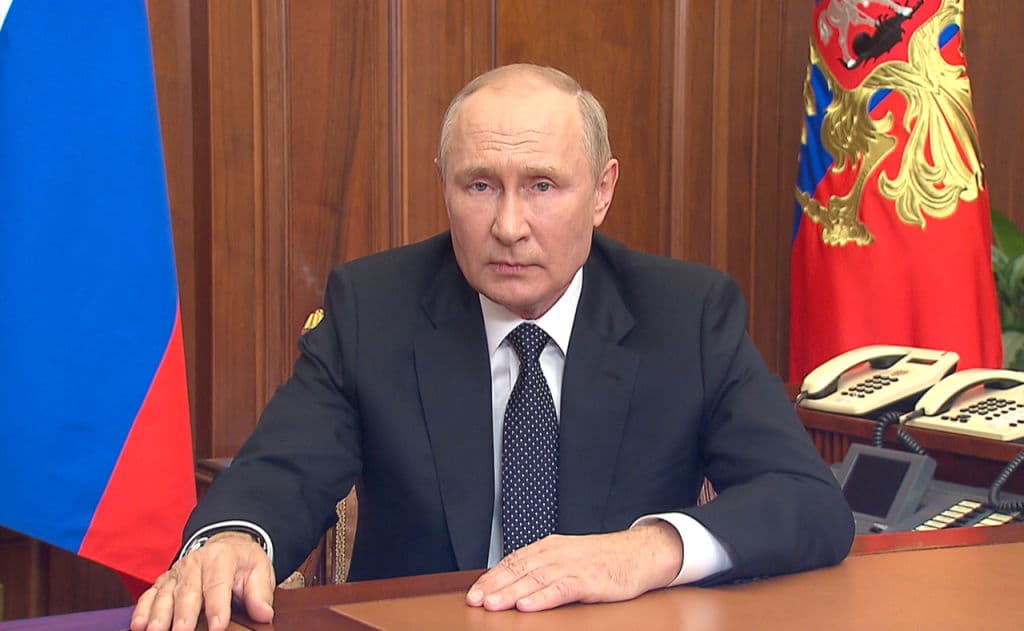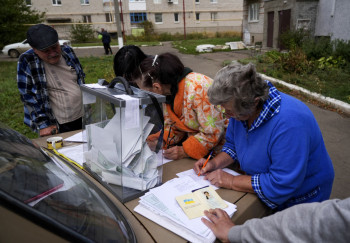BREAKING: Russia declares annexation of 4 Ukrainian oblasts after staged referendums

Russian dictator Vladimir Putin announced that Russia is annexing Ukraine's Zaporizhzhia, Donetsk, Luhansk, and Kherson oblasts during a ceremony in the Grand Kremlin Palace on Sept. 30.
The announcement comes after Russia's proxies held sham referendums in the occupied parts of these regions and, on Sept. 27, declared nearly 100% of people living in the occupied territories of Ukraine "voted" to join Russia.
By making this move, Russia seeks to solidify its control over the invaded Ukrainian territories following the recent successful counteroffensive of the Ukrainian Armed Forces in Kharkiv Oblast.
Russia lays claim to the whole of four oblasts that its forces only partly occupy.
What happened at the ceremony
In a 40-minute televised address to parliament, Putin delivered a yet another of his pseudo-historical lectures to justify Russia's claim on Ukrainian territories. In it, he once again accused Ukrainian regime of being "fascist" and discriminatory, and falsely claimed that people in the occupied territories have always had an affection for Russia. Putin also dedicated a considerable amount of time to homophobic remarks, lashing out at the West for promoting LGBTQ+ rights and "hooking people up on drugs," in an apparent attempt to appeal to his conservative base.
Putin also repeated that Russia will "defend" the territories of the four oblasts it lays claim to against the Ukrainian forces "with all means available."
Following the speech, the Kremlin aired the ceremony of signing of "treaties" between Putin and the occupied territories, represented by four Russia-installed proxy leaders.
What came before
The sham referendums that Russia staged in the occupied territories have been widely denounced as illegal by the international community. "The United States will never, never, never recognize Russia's claims on Ukraine sovereign territory," U.S. President Joe Biden said on Sept. 29.
Kyiv warned that the illegal annexation votes would not change Ukraine's counteroffensive plans and that there would be no peace talks in case these "referendums" take place.
On the early morning of the same day as Putin declared annexation, Russian forces hit a car convoy in Zaporizhzhia, the regional capital of one of the four oblasts Russia lays claim to, with a missile. Twenty-five civilians have been killed and 50 wounded.
During the so-called vote held at gunpoint, the Russian troops were checking residents' houses and writing down the names of locals who voted against the annexation, according to Luhansk Oblast Governor Serhiy Haidai. In occupied Enerhodar, Zaporizhzhia Oblast, Russian troops threatened people who voted against joining Russia with mobilization, according to Ukraine's Defense Ministry.
Back in February, Putin declared the "independence" of Russian-occupied territories in Donetsk and Luhansk oblasts, which was seen as a major escalation in the eight-year-old war. Days later, on Feb. 24, Russia launched a full-scale invasion of Ukraine.
On Sept. 29, Putin signed decrees "recognizing independence" of Ukraine's Kherson and Zaporizhzhia oblasts.
Staging referendums in Ukraine isn't new for Russia. It used them first in Crimea during its initial invasion in 2014, and then in the occupied parts of Donetsk and Luhansk oblasts. In Crimea, Russia proclaimed that 97% of "voters" supported secession and “reuniting” with Russia. Moscow used it as a pretext to immediately annex the peninsula.
In Donetsk and Luhansk oblasts, fake referendums were organized in May 2014, where the residents were supposedly asked if they want to secede from Ukraine; there was no question about Russia.











